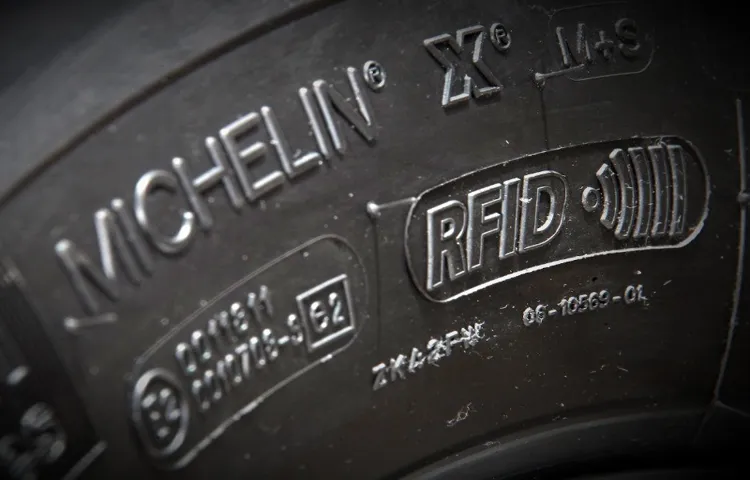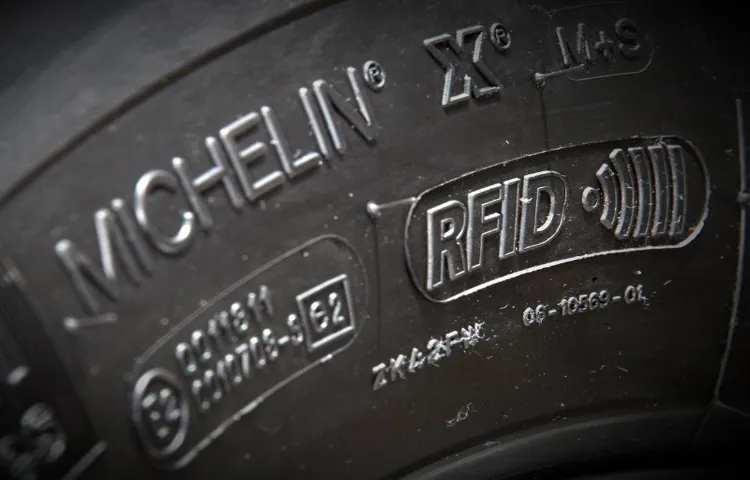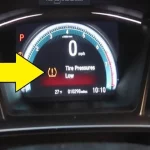As you’re driving down the road, have you ever noticed a string of letters and numbers on your tire sidewall? It can be quite confusing to decipher what all these markings mean, and one that often leaves people scratching their heads is “RF”. Don’t worry, you’re not alone if you’re asking “What does RF mean on a tire?” In this blog, we’ll dive into the meaning behind this mysterious abbreviation and what it signifies for your tires. So, buckle up and let’s get started!
Table of Contents
Understanding Tire Markings
If you’ve ever looked at the sidewall of a tire and seen the letters “RF,” you might be wondering what they mean. “RF” stands for “reinforced” or “run-flat,” depending on the tire. Reinforced tires are designed to withstand heavier loads and provide better handling, while run-flat tires can keep driving even once they’ve lost air pressure.
Other markings on tires can tell you the size, speed rating, and tread type, among other things. Understanding tire markings is important because it can help you choose the right tires for your vehicle and ensure your safety on the road. So, if you’re in the market for new tires or just want to learn more about the ones you have, take a closer look at those sidewalls and get to know the markings.
Sidewall Markings
If you’ve ever looked closely at your tire, you’ve probably noticed a series of letters and numbers stamped onto its sidewall. These markings aren’t just for show; they actually contain important information about your tire’s size, type, and performance capabilities. One of the most critical things to look for is the DOT code, which indicates that the tire meets all federal safety standards.
Other markings might include the tire’s load rating, speed rating, and traction rating, which can help you figure out whether a particular tire is suitable for your vehicle and driving style. However, some markings can be a bit more cryptic, such as the “UTQG” rating, which stands for Uniform Tire Quality Grading and measures a tire’s tread wear, traction, and temperature resistance. If you’re unsure what any of these markings mean, don’t hesitate to consult with a tire specialist who can help guide you through the process.
By understanding these tire markings, you can make informed choices about your vehicle’s safety and performance, so take the time to read and decipher them properly.

Different Types of Tire Codes
Tire markings may appear like a cluster of random letters and numbers, but they actually contain important information about the tire’s specifications and capabilities. The most common tire code is the DOT code, mandated by the U.S.
Department of Transportation, which consists of a series of numbers and letters that indicate the manufacturer, tire size, and production plant location. Another important aspect of tire markings is the load index and speed rating, which inform the maximum weight and speed the tire can handle. Other codes may include M+S for tires that are suitable for mud and snow, and UTQG rating, which measures treadwear, traction, and temperature resistance.
Understanding these tire markings is crucial in selecting the right tire for your vehicle and ensuring optimal performance and safety on the road.
Deciphering RF on a Tire
If you’re a driver, you may have noticed the letters “RF” on your tire. So what does RF mean on a tire? RF stands for “Reinforced,” indicating that the tire has a reinforced sidewall construction. This extra layer of material provides additional protection against punctures and damage, ensuring a safer and more durable tire.
Tires with RF markings are typically found on vehicles that carry heavy loads or travel over rough terrain. It’s important to note that not all tires will have this marking, so be sure to check the specifications of your tire before purchasing or using it. So, if you want to ensure a safer and smoother driving experience, keep an eye out for the RF marking on your tire.
Meaning of RF on Tire
If you’ve ever looked at a tire, you may have noticed the letters “RF” written on its sidewall. RF stands for “Run-Flat,” and it indicates that the tire can run for a limited distance after losing air pressure. This feature has become increasingly popular in recent years, especially in sports cars and high-end luxury vehicles.
A run-flat tire is designed to support the weight of the vehicle and maintain its handling at a reduced speed and for a limited time. If you see RF on a tire, it means you have the peace of mind to get to a nearby tire shop or service center safely. While these tires offer added safety and convenience, it’s still important to have your tire inspected regularly and replace it if it’s damaged or worn out.
Overall, RF on a tire is a good sign that your vehicle is equipped with a reliable safety feature that can help you get through a difficult situation on the road.
Possible Interpretations of RF
RF (Radio Frequency) coding on a tire can be perplexing and overwhelming to decipher. However, there are a few possible interpretations that could help understand its meaning. One interpretation is that the RF code is used to track the tire’s manufacturing date and location.
It may also indicate the tire’s size, brand, and other relevant information. Another interpretation is that the RF code could be utilized in tire recalls or customer service issues. In case of a safety recall, this code could be used to trace back the affected units and notify the customers.
On the contrary, if a customer reports an issue with their tire, this code could aid in locating that specific tire’s details. Overall, the RF code on a tire, though it may be confusing, serves to enhance safety and traceability in the tire industry.
Explanation of RF on Specific Tire Brands
If you’re in the market for new tires, you may have come across the term “RF” on specific brands. RF stands for Reinforced, and it refers to tires that have a reinforced sidewall to provide better stability and support. This type of tire is commonly used on vehicles with a high center of gravity, such as SUVs and trucks.
The reinforced sidewall helps to prevent the tire from squishing or rolling over during sharp turns, which can lead to loss of control. Some popular tire brands that offer RF tires include Michelin, Bridgestone, and Goodyear. It’s important to note that not all tire models within a brand offer RF technology, so be sure to check before making a purchase to ensure you are getting the added benefits of a reinforced tire.
Conclusion and Final Thoughts
So, what does RF mean on a tire? Well, my dear friends, it’s simple really. RF stands for Reinforced, or sometimes even Retreaded, Flexing. But let’s be honest, that’s not nearly as fun as coming up with our own interpretations.
How about Really Fast, Road Fury, or my personal favorite – Rubber Force? No matter what you choose to believe, just remember that the letters on your tires might as well stand for “Ready for adventure!”
FAQs
What is the meaning of the letters RF on a tire?
The letters RF on a tire indicate that it is a radial tire with a sidewall construction that is designed to give a smoother ride.
Do all tires have the letters RF on them?
No, not all tires have the letters RF on them. The letters RF are only present on radial tires with a specific sidewall construction.
Why are radial tires with the RF sidewall construction popular?
Radial tires with the RF sidewall construction are popular because they offer better handling, improved fuel efficiency, and a smoother ride.
How do radial tires with the RF sidewall construction differ from other tire types?
Radial tires with the RF sidewall construction differ from other tire types because they have a unique sidewall design that enhances their overall performance.
Can I use a tire without the RF sidewall construction on my vehicle?
It is important to use the tire that is recommended for your vehicle. If your vehicle requires tires with the RF sidewall construction, you should only use those types of tires.
Are there any disadvantages to using radial tires with the RF sidewall construction?
One potential disadvantage of using radial tires with the RF sidewall construction is that they can be more expensive than other tire types. However, the benefits they offer may outweigh their cost.
How can I determine if my tires have the RF sidewall construction?
You can determine if your tires have the RF sidewall construction by looking for the letters RF on the sidewall of the tire. If they are not present, then your tires are not radial tires with the RF sidewall construction.



